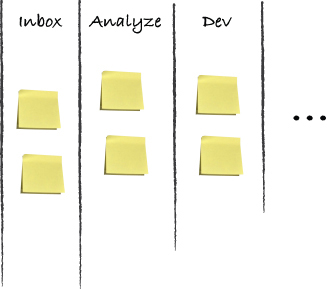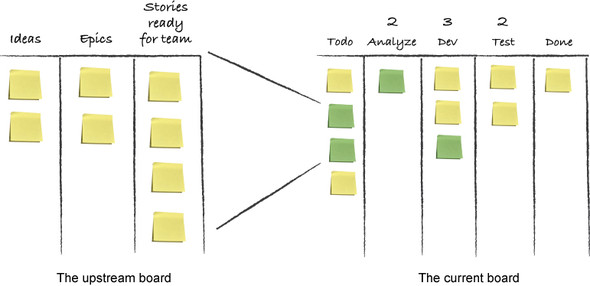This chapter covers
- Planning, scheduling, and ways to plan at the right moment
- Estimating, story points, and other relative estimation techniques
- Cadence: the heartbeat of your process
- Do you need plans at all?
The need for planning arises from the need to inform others around you and yourself about where you are and where you’re going. You should raise your eyes and consider not only your own board but also the context around your team. There are sometimes other teams or people who come before you, and you want to keep them informed about your process and let them know how it’s going for you.

Consider a team with the board at right.
There are only two items left in the Inbox column; how will it be refilled? Who do you need to talk to in order to know what to do next? How often can you meet with them and talk about what they want done next? This is the kind of planning you need to do in order to understand what to do next and to inform upstream processes that you’re ready to accept more work. Upstream means the work that takes place before you; it could be other departments or other people doing the work, or tasks that are performed before yours but at another stage in the process. This could be visualized with separate boards, as shown here:
